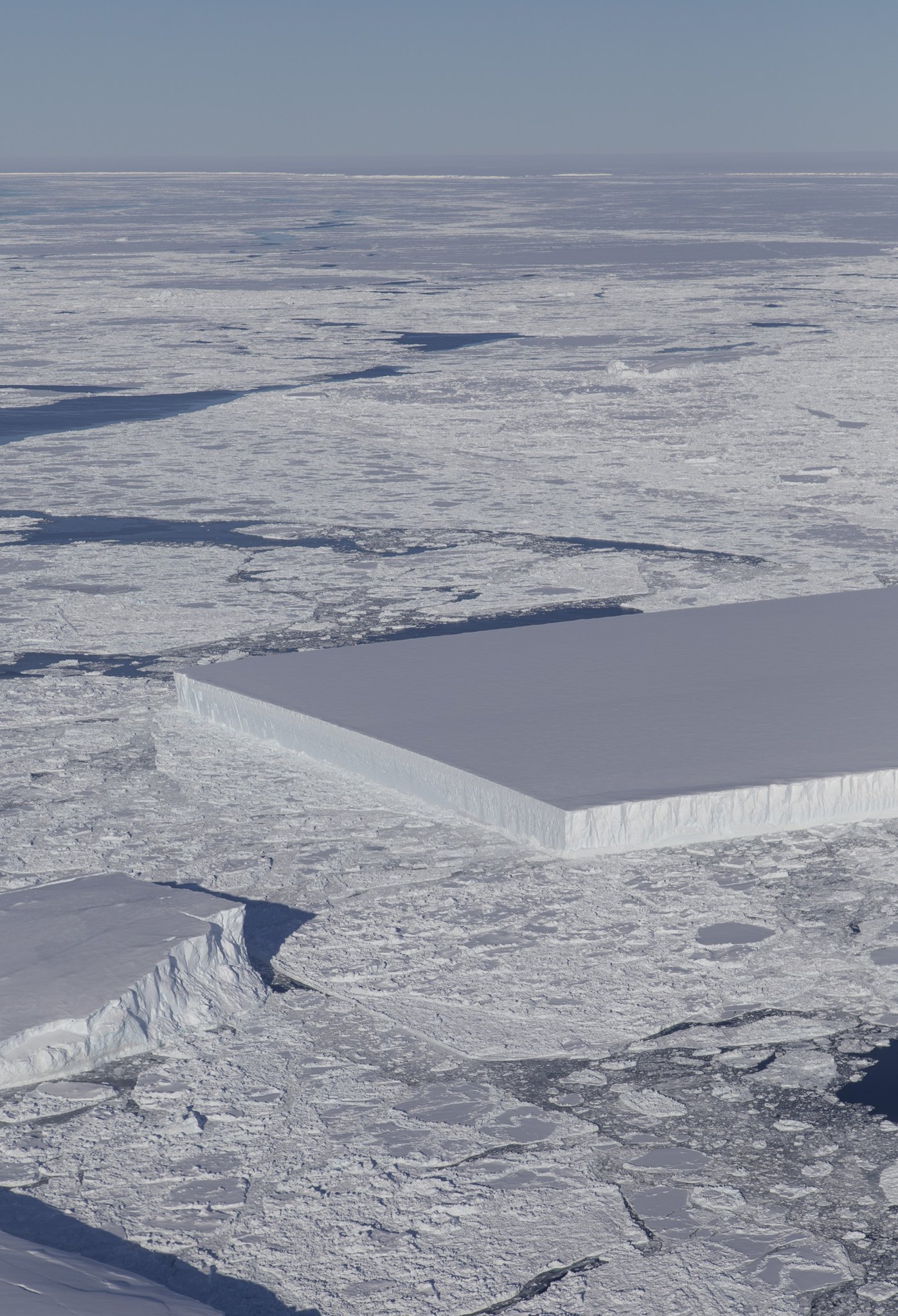NASA Figures Out Where Weirdly Square Iceberg Was Born

Earlier this month, NASA published a strange and entrancing photo of a ridiculously square iceberg. And NASA scientist Kelly Brunt speculated to Live Science that the berg was likely pretty fresh, its sharp corners the result of recently snapping off of an ice shelf and not having yet been battered much by the elements.
Since then, however, NASA went back and looked at some more evidence. And it turns out that the squareberg had a rougher birth than what was originally believed. Satellite images showed that it split from Antarctica's splintering Larsen C ice shelf behind a much larger, curved iceberg called A-68 and made its way north into clogged, icy water.
The squareberg is a tabular iceberg, essentially a chunk of flat ice that broke off the ice shelf, rather than one of the more strikingly geometric, smaller bergs that sunk the Titanic.
"The berg cruised all the way north and through a narrow passage between the A-68’s northern tip and a rocky outcrop near the ice shelf known as Bawden Ice Rise," NASA said in a statement. "NASA/UMBC glaciologist Chris Shuman likens this zone to a nutcracker. A-68 has repeatedly smashed against the rise and caused pieces of ice to splinter into clean-cut geometric shapes," NASA added referring to Shuman, who is also at the University of Maryland Baltimore County.
You can see the berg making its way through dangerous waters in this photo:
Over time, it did lose its nice square shape, taking on more of a trapezoidal formation. NASA said it will likely continue to make its way north, where it will melt.
- Images of Melt: Earth's Vanishing Ice
- In Photos: Antarctica's Larsen C Ice Shelf Through Time
- Photo Gallery: Antarctica's Pine Island Glacier Cracks
Originally published on Live Science.
Get the world’s most fascinating discoveries delivered straight to your inbox.

 Live Science Plus
Live Science Plus






